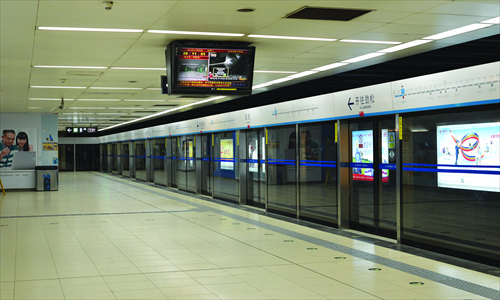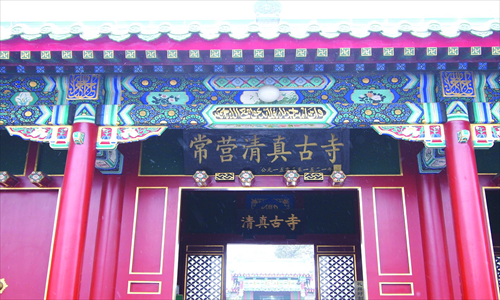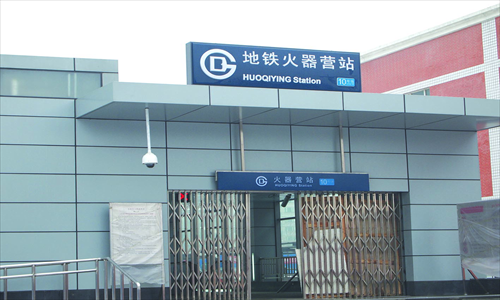All aboard



After years of planning and construction, Beijing's four new subway lines are set to open December 28. Adding on to the existing 15 lines, the four new or expanded lines total 69.8 kilometers with 166 trains. They will enhance the speed of Beijing's public transit and cut down on walking distance between transit stops.
With this expansion, the Beijing subway network will feature 442 kilometers, outnumbering Shanghai and ranking second to London in mileage, according to Beijing Metro Network Administration Company.
Line 6 will run parallel to Line 1, from Wulu Station near the west Fourth Ring Road to Caofang in the far east part of Chaoyang district. The second phase of the in-operation Line 10, from Panjiayuan Station in the southeast to Huoqiying in the northwest of the city, will connect Line 10 into the city's second loop line. The southern section of Line 8 will run from Beitucheng Station to Gulou Dajie. And the northern section of Line 9 will connect the National Library with the Military Museum.
New features
As the new lines run through some of the city's popular commercial and tourist sites, which often see rush hour traffic jams, most of the stops will be equipped with parking spaces for bicycles, a feature distinct from car parking lots neighboring previous stops.
According to the management company, the parking lots will be able to hold 25,800 bicycles. Some of the stops will also be equipped with bike rental services. The updated rental service, available both to locals and expats, will be expanded to Xicheng, Fengtai and Shijingshan districts next year following a trial run in Dongcheng and Chaoyang districts in October.
By providing the rental services, "we try to solve the 'one kilometer' problem - the distance between bus stops and many subway stations - and thus to attract more citizens to take public transportation," the Beijing Infrastructure Investment Company's spokesperson Gao Yi said in an interview with the Beijing Daily earlier this month.
The new subway stops can now function as shelters against floods, fire and nuclear or gas attacks, according to the Beijing Civil Defense Bureau. Following the installation of such gates in Line 5, the solid, seven-ton gates installed in each tunnel can help separate the tunnel and the station into a shelter, should an emergency occur.
New spots to check out
Although the new lines run through some of the already-known popular sites around town, such as Beihai Park and Panjiayuan, the antiques market, there are places further afield that are worth checking out.
Changying, penultimate stop of Line 6 eastbound
Located in the far east part of Chaoyang district, Changying, with a population of 74,000, has a well-preserved Muslim community of 7,000 and features a dynamic Muslim culture. According to historical records, the area was once the army base for one of the founding figures of the Ming Dynasty (1368-1644), General Chang Yuchun. He led farmers-turned-Muslim-soldiers in an uprising to overthrow the Yuan Dynasty (1271-1368).
Although the area has seen an influx of city commuters and residents from other parts of the country over the years, the Muslim culture is still prominent. The area is scattered with restaurants and shops featuring Muslim cuisine and accessories.
One of the must-sees is the solemn Changying Mosque, with a history of almost 500 years. The exquisitely built structure of 8,459 square meters is still in active use today. Everyday 400 visitors stop by for the mosque's five prayer gatherings hosted from the early morning to late evening, according to the mosque staff.
Qingnian Lu, fifth last stop of Line 6 eastbound
Located on Chaoyang Beilu, the stop is just meters away from Chaoyang Joy City, a comprehensive shopping and entertainment complex. It includes a shopping center of 230,000 square meters and an apartment and hotel space of 70,000 square meters, along with a cinema, a gym and other relaxation facilities. Opened in May, 2010, the complex has become the favorite relaxation and gathering venue for young and chic people living nearby.
Targeting young people, Joy City has been hosting culture and charity events on a monthly basis and will be attracting more people when the subway opens.
Huoqiying, northwest of the second phase of Line 10, next stop from Bagou station, southbound:
Possessing a strategic status in keeping the unity of the Qing Dynasty (1644-1911), Huoqiying, which literally translates to firearm camp, once was the military base for drilling firearms and was populated by soldiers and their families, totalling more than 10,000 people.
Built along the Qingshui River near the west Fourth Ring Road, the original camp took the shape of a sailing ship, and the enclosed military base featured about 65 streets and alleys in its compound.
However, little of the original structure can be seen nowadays. Part of the camp has been turned into the Beijing Air Force Command and Staff College, which forbids random visitors from approaching it. The remaining barracks include the ravaged Yongshan house, the residence of an army officer, and once was turned into a school building.
Dahongmen, seventh westbound stop from Jinsong Station on Line 10
Built in the early 15th century of the Ming Dynasty, Dahongmen, or Great Red Gate, in Fengtai district, was the site which emperors and high-level officials had to pass by to travel to the southern part of the city. Nestled upon the Liangshui River, the gate once featured a picturesque landscape. Nowadays the area is best known for the Dahongmen Cloth Wholesale Market, the biggest in northern China. With over 7,000 businesses, it offers a wider selection and lower prices compared to the markets near the Beijing Zoo.
Reaction from residents
Though the subway will add convenience to many Beijingers' lives, the residents of the areas surrounding the new subway stops have mixed feelings.
Xiang Dong, 29, a Hunan native who has been living in Beijing for more than a year, is among those who are eagerly looking forward to the opening of Line 6. Xiang moved to Changying from Fengtai district last month and opened a fruit store of eight square meters about one kilometer west of the Changying Station. Xiang said he and his new roommate, who works near Guomao, are taking advantage of the convenience the new subway line will bring to the lower rent apartments.
"When it opens, there will be better mobility in this area and more people may stop by my store," he said. Xiang said an increase in foot traffic might help his small business turn a profit.
Hou Jiangqiang, 43, a lifelong resident of Changying, welcomes the new subway stop near his home. "It sure will be easier to travel to the town center. In addition, when more people move to the area, they might be able to know more about my religion and Muslim culture, which is a good thing," Hou said with a smile.
But Hou is also concerned with rising house and food prices, which are partly caused by the influx of city commuters. "Eight years ago a one-bedroom apartment cost only 600 yuan, but now it's about 1,800 yuan," he said.
Zhang Shuai, 25, who lives near the Huoqiying subway station, is concerned. "The surrounding residential area might become a little messy as there might be illegal taxis or padcabs carrying riders back and forth [from the station and their homes]," he said.
Xiang disagrees, saying it depends on how the management bureau deals with it. The city can work out measures to keep things in order, Xiang said.